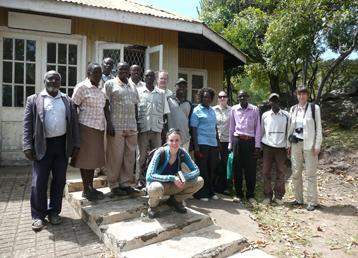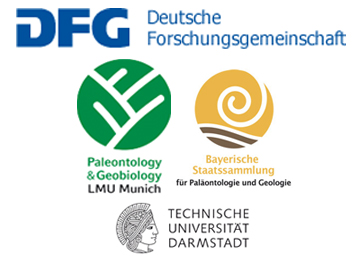Kenya Project
Fish fossils from Miocene palaeolakes in the Central Kenya Rift
and their palaeoenvironmental Implications
The fossil record represents a very important source of direct information for the understanding of the evolutionary history of organisms. However, with regard to the ancestors of the approximately 3000 species that make up the modern fish fauna in African freshwater habitats, the known fossil record is poor. Even from the most recent epochs, i.e. the Miocene, Pliocene and Pleistocene, only about 60 fossil taxa are known.
The Miocene sediments in the Tugen Hills (Baringo, Kenya) provide the unique opportunity to collect well-preserved fish fossils. The goals of the Kenya project are (i) to explore these fossiliferous archives, (ii) to analyse the newly collected fish fossils, together with other co-occurring fossils and sedimentological data, and (iii) to make use of the findings for palaeoenvironmental and palaeoclimate reconstructions. During two field campaigns in 2013 and 2014 we have assembled about 650 articulated fish fossils together with samples for palynological and sedimentological analyses from the middle and upper Miocene Ngorora Formation and the upper Miocene Lukeino Formation. The current aim is to identify the fish fossils from the different sites and to present them in a phlyogenetic context.
Published articles (peer-reviewed, sorted chronologically):
- Kevrekidis, C., Ruthensteiner, B., Cerwenka A.F., Penk, S.B.R. & Reichenbacher, B. (in press). New cichlid fossils from the middle-late Miocene alkaline lakes of Africa. – Journal of Vertebrate Paleontology.
- Altner, M. & Reichenbacher, B. (2020). A small cichlid species flock from the Upper Miocene (9–10 MYA) of Central Kenya. – Hydrobiologia. Download of article (open access).
- Altner, M., Ruthensteiner, B. & Reichenbacher, B. (2020). New haplochromine cichlid from the upper Miocene (9–10 MYA) of Central Kenya. – BMC Evolutionary Biology 20:65. Download of article (open access).
- Penk, S.B.R., Altner, M., Cerwenka A.F., Schliewen U.K. & Reichenbacher, B. (2019). New fossil cichlid from the middle Miocene of East Africa revealed as oldest known member of the Oreochromini. – Scientific Reports, 9:10198. Download of article (open access).
- Kevrekidis, C., Valtl, M., Penk, S.B.R., Altner, M. & Reichenbacher, B. (2019). Rebekkachromis nov. gen. from the middle-upper Miocene (11 MYA) of Central Kenya: The oldest record of a haplotilapiine cichlid fish. – Hydrobiologia, 832: 39–64.
- Altner, M., Schliewen, U., Penk, S.B.R. & Reichenbacher, B. (2017). †Tugenchromis pickfordi gen. et sp. nov. from the upper Miocene – a stem-group cichlid of the ‘East African Radiation’. – Journal of Vertebrate Paleontology, 37(2): e1297819. Download of article (open access).
- Rasmussen, C., Reichenbacher, B., Lenz, O., Altner, M., Penk, S.B.R., Prieto, J., Brüsch, D. (2017). Middle–late Miocene palaeoenvironments, palynological data and a fossil fish Lagerstätte from the Central Kenya Rift (East Africa). – Geological Magazine, 154 (1), 24–56.
- Altner, M. & Reichenbacher, B. (2015). †Kenyaichthyidae fam. nov. and †Kenyaichthys gen. nov. – First Record of a Fossil Aplocheiloid Killifish (Teleostei, Cyprinodontiformes). – PLoS ONE 10(4):e0123056. Download of article (open access).
Text and Layout: B. Reichenbacher
Last update: September, 2020





